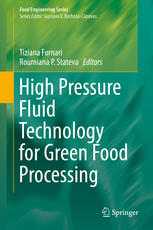

Most ebook files are in PDF format, so you can easily read them using various software such as Foxit Reader or directly on the Google Chrome browser.
Some ebook files are released by publishers in other formats such as .awz, .mobi, .epub, .fb2, etc. You may need to install specific software to read these formats on mobile/PC, such as Calibre.
Please read the tutorial at this link: https://ebookbell.com/faq
We offer FREE conversion to the popular formats you request; however, this may take some time. Therefore, right after payment, please email us, and we will try to provide the service as quickly as possible.
For some exceptional file formats or broken links (if any), please refrain from opening any disputes. Instead, email us first, and we will try to assist within a maximum of 6 hours.
EbookBell Team

5.0
28 reviewsThe aim of this book is to present the fundamentals of high pressure technologies from the perspective of mass transfer phenomena and thermodynamic considerations. Novel food applications are exposed and their relation to chemical analysis, extraction, reaction and particle formation processes are outlined. The chapters are written by a diverse group of scientists with expertise in chemistry, food processes, analytical chemistry, chemical engineering and chemical engineering thermodynamics, and biotechnology.
The mission of green food engineering is to promote innovative technologies that reduce or eliminate the use or generation of hazardous materials (solvents, reagents) in the design and operation of food related processes, with the view to improve food safety and quality. Several efficient, environmentally friendly and benign technologies based on the use of high pressure and green solvents have demonstrated to be sustainable alternatives to traditional processes in the food industry.
Although hundreds of new ideas are being published in the open literature, reliable engineering tools to simulate and design those processes are still under development. High Pressure Fluid Technology for Green Food Processing presents in-depth analyses and outlines the ways towards their maturity.
Tiziana Fornari, Research Institute of Food Science (CIAL) Universidad Autonoma de Madrid, Madrid, Spain
Roumiana P. Stateva, Institute of Chemical Engineering, Bulgarian Academy of Sciences, Sofia, Bulgaria